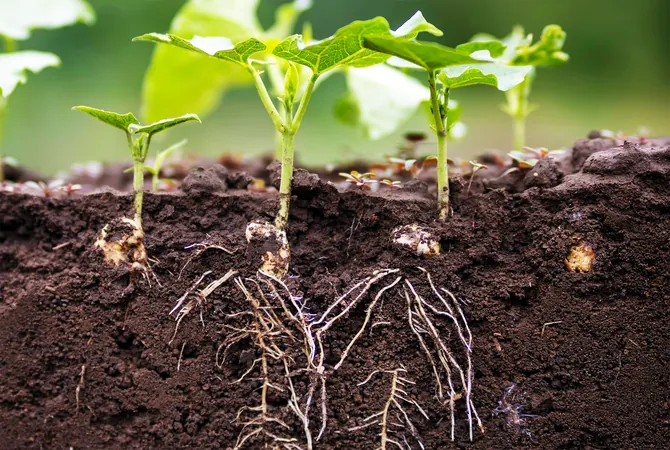
Unlocking Nature's Secret: How to Make Plants Grow Faster and Stronger!
2025-05-19
Author: Kai
The Hidden Life of Seeds
Every seed has a singular mission: to thrive by reaching water, absorbing nutrients, and maintaining its structure. Below the surface, root tips extend into the soil, branching out to secure the plant's survival.
Timing Is Everything!
In today's unpredictable climate, getting those root branches to sprout at the right moment is crucial. Researchers have discovered that this delicate timing is tied to a process known as autophagy, commonly associated with the health benefits of fasting.
Recycling for Growth
A groundbreaking study from the University of Copenhagen reveals how plant roots utilize autophagy to enhance growth. Researchers traced a shape-shifting protein through the roots of Arabidopsis, uncovering how short bursts of cleanup allow for new branch formation, helping plants withstand challenging weather.
The Science Behind the Growth
Assistant Professor Eleazar Rodriguez, who led the study, notes, "Fasting is gaining popularity for its health benefits in humans, activating cellular cleanup processes that remove waste. Our findings show that a similar mechanism exists in plants, playing a critical role in root growth and nutrient absorption."
Meet the Cleanup Crew
This process hinges on a molecule called NBR1, which tags damaged proteins for breakdown. Each cycle of cleaning resets a signaling circuit essential for root growth, allowing it to function optimally.
Rhythmic Growth Patterns
Side branches typically sprout with impressive precision. About every four to six hours, auxin, a growth hormone, peaks at the root, activating the genes necessary for new branching.
The Consequences of a Shutdown
When researchers disabled specific autophagy genes, they observed mutant seedlings struggling to produce lateral roots and absorb water. Rodriguez explains, "Disrupting autophagy resulted in waste build-up, increasing ARF7 protein levels amid the debris, leading to a weak root system."
Why This Discovery Matters
The implications of these findings are vast. The autophagy mechanisms found in flowering plants could pave the way for advanced agricultural practices, allowing breeders to create plants with deeper, more resilient root systems.
The Road Ahead for Agriculture
Excitingly, emerging techniques harnessing beneficial bacteria are being developed in Denmark, aiming to manipulate plant growth patterns for improved drought and flood resistance.
Autophagy: The Key to Thriving Crops
Rodriguez emphasizes that more robust root systems equate to better nutrient and water uptake, meaning stronger, faster-growing plants. Understanding these processes is vital, given our reliance on plants for food and oxygen.
Field Testing in Denmark
Pilot plots in Denmark are currently evaluating these findings under varying rainfall patterns, with early results suggesting that crops with optimized recycling processes recover more swiftly from both wet and dry conditions.
What's Next for Plant Research?
Future studies aim to explore whether other auxin response factors share this recycling pathway and how environmental factors like light and soil chemistry can further influence growth.
A Love Letter to Plants
As we continue to uncover the secrets of plant biology, ensuring that root cells remain clear of waste can lead to sturdier yields. These discoveries hold promise for farmers navigating the challenges of an ever-changing climate.
This exciting research was published in EMBO Reports, highlighting a significant leap forward in how we understand plant growth.


 Brasil (PT)
Brasil (PT)
 Canada (EN)
Canada (EN)
 Chile (ES)
Chile (ES)
 Česko (CS)
Česko (CS)
 대한민국 (KO)
대한민국 (KO)
 España (ES)
España (ES)
 France (FR)
France (FR)
 Hong Kong (EN)
Hong Kong (EN)
 Italia (IT)
Italia (IT)
 日本 (JA)
日本 (JA)
 Magyarország (HU)
Magyarország (HU)
 Norge (NO)
Norge (NO)
 Polska (PL)
Polska (PL)
 Schweiz (DE)
Schweiz (DE)
 Singapore (EN)
Singapore (EN)
 Sverige (SV)
Sverige (SV)
 Suomi (FI)
Suomi (FI)
 Türkiye (TR)
Türkiye (TR)
 الإمارات العربية المتحدة (AR)
الإمارات العربية المتحدة (AR)